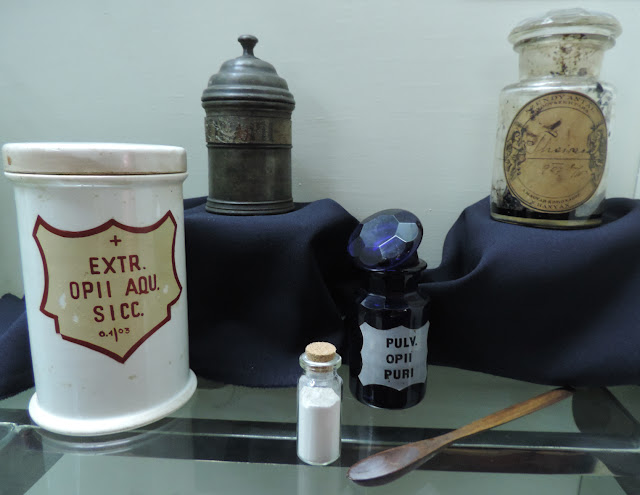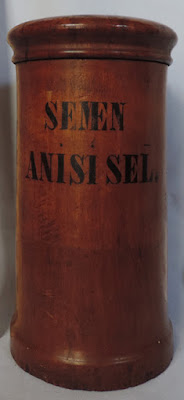 |
| Theriaca jar |
 |
| Peasant preparing an ointment to protect against snakes from the theriaca of Nicander of Colophon (tenth century A.D.) |
Opium is the dry latex obtained
through cutting the poppy seed pod (Papaver somniferum) and thus it was also known as the
milk or the tears of the poppy (lachryma papaveris). The substance
contains morphine and codeine and has been used since the earliest times as
analgesic, anesthetic, and sedative, either to medical ends or during rituals.
Since Antiquity opium has been a
traditional ingredient in theriaca-type
remedies – a famous concoction used as panaceum and antidote against animal
bites and poison. Theriaca contained
around 40 ingredients, its preparation could last several years, and was
extremely expensive.
Laudanum is
the term consecrated since the sixteenth century for opium tincture, discovered
by the famous German alchemist Paracelsus. It was used for centuries as it was a
very popular, even if temporary remedy for coughing, diarrhea, and pain in
general. At the same time, laudanum
was cheaper than alcoholic drinks, taxed extra, and was available without
prescription – in fact a widely accessible narcotic.
 |
| Opium and Theriaca apothecary jars from the History of Pharmacy Collection in Cluj-Napoca |
The recreational use of opium, as a
drug, started in China
in the fifteenth century, flourished during the seventeenth, and triggered
severe bans, commercial controls, and even wars.
The History of Pharmacy Collection in Cluj-Napoca includes a number of
pharmaceutical jars from the eighteenth and nineteenth centuries for the
storage of opium powder, extract, and tincture, but also for the expensive theriaca, that also included opium among
its ingredients.


















































